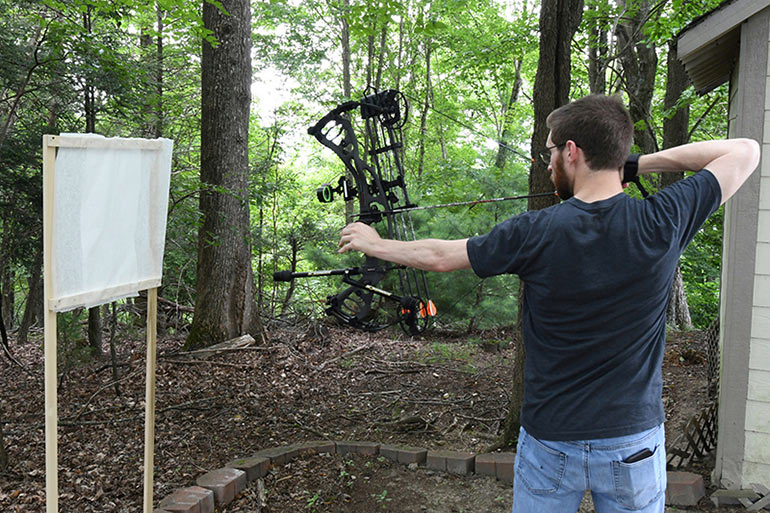
The first and most obvious question when it comes to paper-tuning your bow is why you need to do it at all. In a nutshell, paper-tuning gives you clues about how your arrow behaves in flight and allows you to make adjustments for optimal arrow flight. Just short of buying a high-dollar, slow-motion camera, paper-tuning is one of the best ways serious bowhunters can track arrow flight and make the right adjustments to their setups.
The great news is that tuning your bow doesn’t have to be a complicated process — all it really takes is a little know-how and a fair measure of patience. Follow these quick and easy steps, and you’ll be well on your way to producing more accurate shots and tighter groups. In the end, that gives you the confidence you need when the trophy of a lifetime is on the line, and that’s what it’s all about.
Build Your Frame
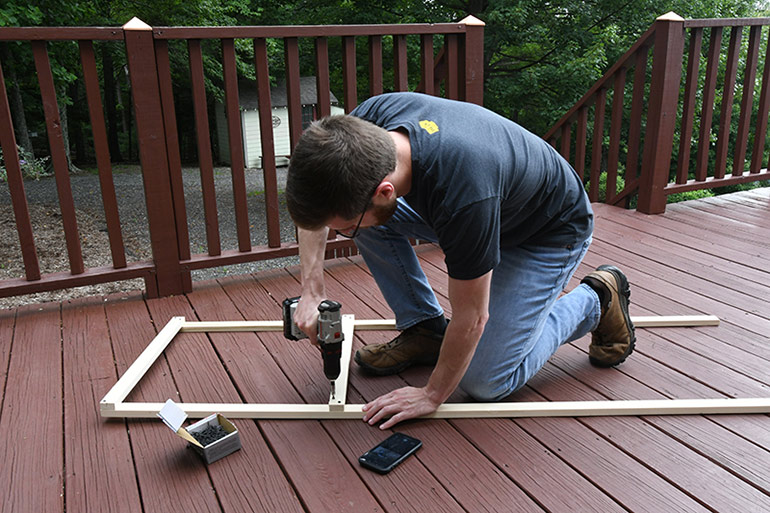
To begin the paper-tuning process, you first need a frame to hold the paper you’ll be shooting through. Inexpensive furring strips from any hardware store are perfect for this project, though you can use any scrap lumber you have laying around that can be nailed or screwed together to create a square frame. We used two eight-foot furring strips, a sawzall to cut to length, a hand drill and 1-inch drywall screws to create this simple frame. You can also sharpen the legs to make it easier to pound the frame into the ground in front of your target.
Stretch Your Paper

After creating a frame, use heavy butcher or wax paper and a staple gun, attaching one end of the paper to the top of the frame evenly, pulling it tightly across the frame face and securing it at the bottom with more staples. You can also use four large, legal binder clips to secure the paper at the top and bottom.
Set Up Your Target
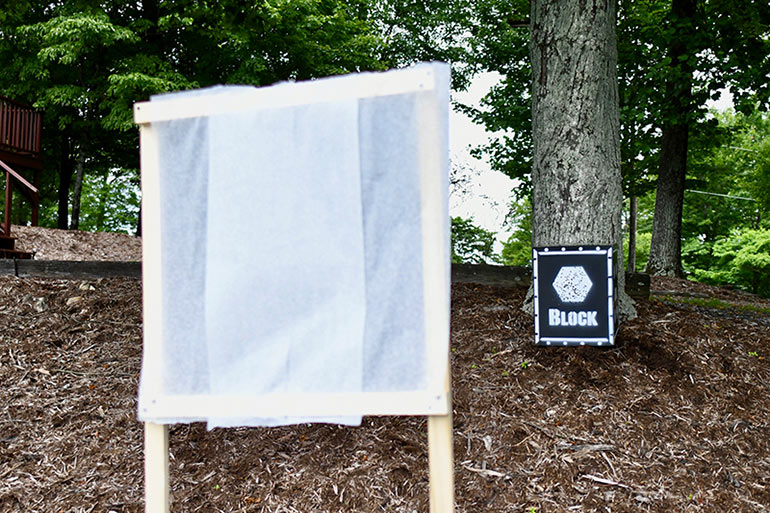
With your paper securely tightened across the frame, anchor your paper-tuning frame right in front of a normal block target, which will catch arrows after they pass through the paper. You can either pound the sharpened frame into soft ground in front of the target, build additional lumber feet so it can stand freely on concrete or hard ground or prop the tuning target up with cinder blocks or bricks.
Fire Away
Now that you’ve got your paper-tuning frame placed in front of the target, stand about five to 10 feet away from the paper, aligning yourself and the bow so that arrows pass through the paper and are safely captured by the block target. You want to stand close, because this tells you how your arrow travels as it exits the arrow rest and clears the bow. The tears produced by the released arrow give you pointers on how to adjust your arrow rest and/or nocking point, or it gives you clues for better arrow and/or point selection.
View Your Shots

The tears in the tight paper produced by your flying arrow will tell you how to proceed with the tuning process. As a side note, all of the instructions which follow are for right-handed shooters; you will have to reverse them for left-hand shooters. Also, make sure your fletching clears the rest arms and accessories before starting this process.
Evaluate Paper Holes
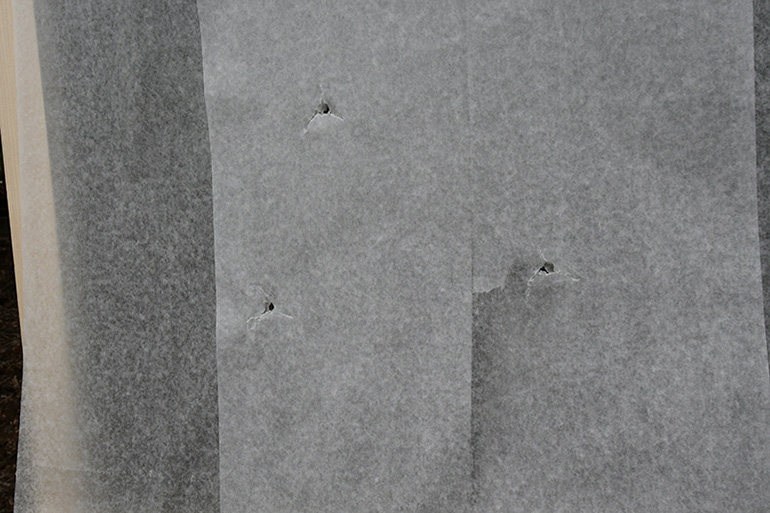
The point of this exercise — and the indication of a perfect tune — is to produce a clean bullet hole with three clean cuts showing where the vanes have passed through the paper. Keep in mind, there will be little or no cuts when shooting feather fletching.
Before you start, you should carefully consult an arrow manufacturer’s chart to assure you of the proper spine for all factors involved (draw length, arrow weight and point weight).
A right-hand tear (lower-right tear) indicates an arrow that is too stiff, owns too little point weight, an arrow rest that is adjusted too close to the sight window of the riser or that you aren’t shooting enough draw weight. To solve the problem, choose an arrow with a lighter deflection/spine (400 instead of 340, for instance), cut that arrow longer, use a heavier point (125-grain instead of 100-grain, for example), adjust the arrow rest away from the riser or add draw weight by tightening the limb bolts — evenly, and only when possible.
A left-hand tear (lower-left tear) indicates an arrow that’s not stiff enough (or too long) or has too much point weight, or an arrow rest that’s adjusted too far away from the riser sight window. This situation is solved by shortening the arrow (but not so much that a broadhead will contact the rest arms), choosing a lighter point (100-grain instead of 125-grain, for instance), moving the rest arms closer to the riser or decreasing draw weight by loosening the limb bolts evenly.
A high tear indicates that your nocking point or string loop is situated too high and the arrow is leaving the bow tail-high. In this case, move it down in small increments until the arrow passes through the paper level. A low tear indicates just the opposite.
Sometimes you will observe a combination tear, like one that is high and right. Work on the elevation adjustment first before moving on to the windage correction, as the former is easier to accomplish than the latter.
Make Adjustments
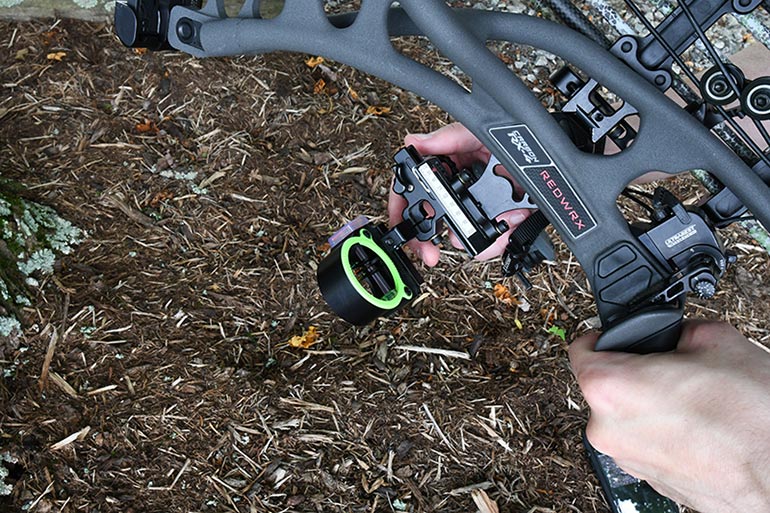
The larger the tear, the more dramatic the adjustments to be made. It’s normally best to start with the arrow rest on smaller tears, making careful windage adjustments in 1/16-inch increments (preferably using the arrow rest’s engraved hash marks as reference so you don’t lose your place) before investing in additional test shots. The next area to address is point weight, and arrow spine last (an arrow-selection chart should have landed you in the right ballpark in the beginning). This is trail-and-error work, so take your time and be patient.
Finalize Your Group

After your bow is properly paper-tuned, producing clean bullet holes through paper, you are then ready for final sighting. You should also find your bow now shoots tighter groups with both target tips and hunting broadheads.
Ready for the Real Deal
Now you’re ready to hunt. Carefully tuning your hunting bow yourself provides confidence that your equipment is shooting the very best it can. And in bowhunting, confidence is worth its weight in gold.








